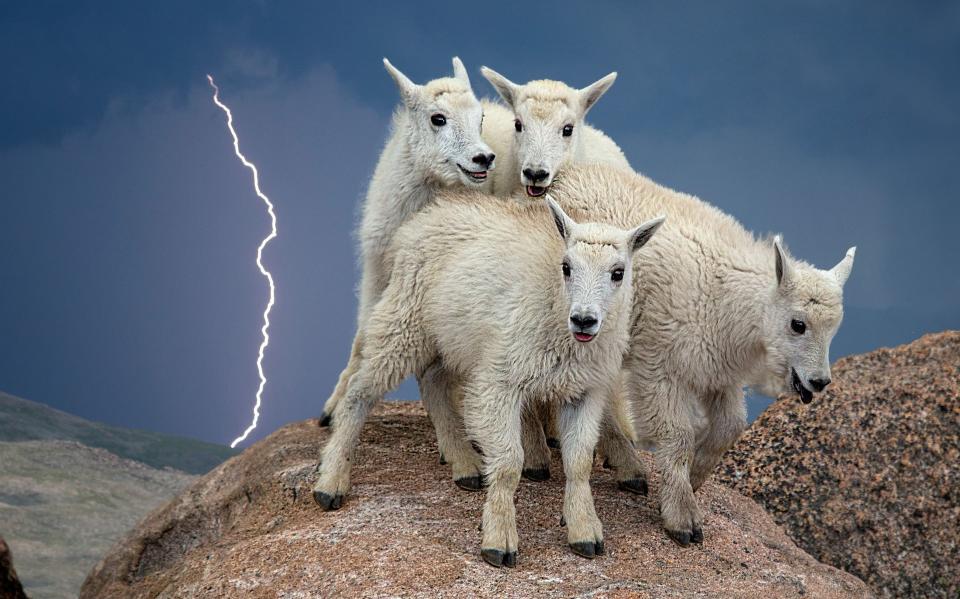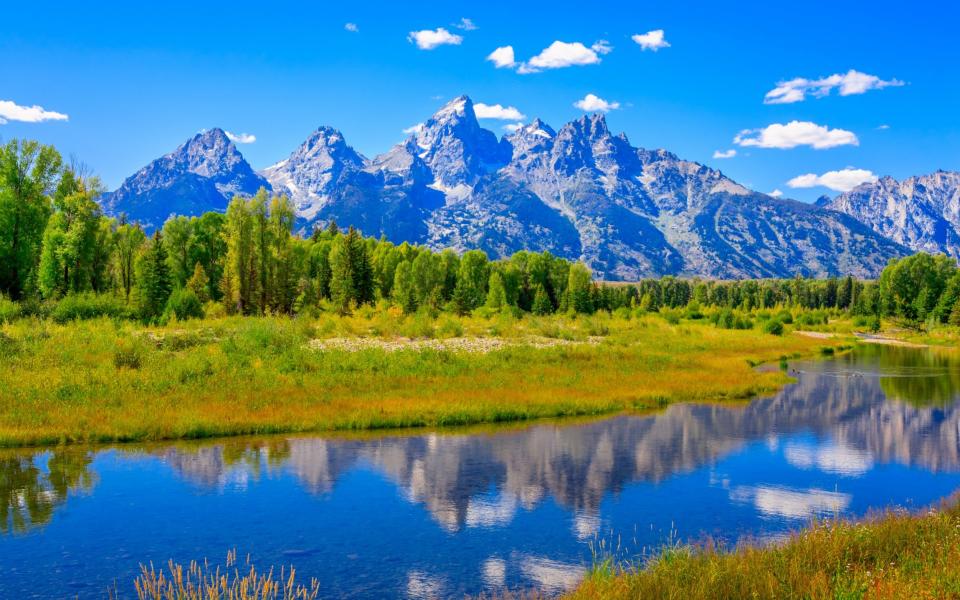Wyoming appeals for hunters to visit the state and shoot wild goats

Wyoming is appealing for hunters in the United States to visit their state and shoot as many goats as possible, in what one official termed "every hunter's dream".
The 100 mountain goats in the Grand Teton National Park are considered by state and federal officials an invasive animal, and a threat to the region's bighorn sheep.
For years conservationists, land management experts, National Park officials and the state wrangled with the problem.
In 2018 they agreed to a plan which would rely on aerial sharp shooters, controlling the population from helicopters.
A helicopter was sent to kill the mountain goats in February, and the gunmen on board managed to shoot 38 goats - a third of the population - in one day.
Shortly thereafter, however, the helicopters were indefinitely grounded owing to complaints from the governor, and the goat elimination programme suddenly paused.

Now Wyoming state officials are appealing for hunters to come and "take out" the rest of the population.
“This is every hunter’s dream,” said Kristin Combs, executive director of Wyoming Wildlife Advocates.
She told the Daily Beast: “You’re letting them loose inside a national park to kill as many goats as possible.”
The governor of Wyoming, Mark Gordon, was enthusiastic about the appeal to hunters.
He said it was in tune with local culture, and would mean that families could use the meat from the felled animals.
“We felt because of COVID, that meat was going to go wanting," he said.
"People could make use of the meat. Hunting for your family is a tradition we all cherish in Wyoming.”
He objected strongly to the original plan to shoot the goats by helicopter, writing to Grand Teton’s acting superintendent expressing his “profound disappointment that the NPS chose to act unilaterally, aerially executing mountain goats over the state of Wyoming’s objections.”
The National Parks Service, however, insists that inviting hunters is inefficient and ineffective.

Over the course of a week in September, hunters were only able to take out three goats, said Denise Germann, Grand Teton National Park’s spokesman. Only meat from one of the goats was able to be retrieved.
“If we assume that’s the average for the weeks remaining, this could take years and the potential for disease transfer to bighorn sheep won’t be going away anytime soon,” said Bart Melton, wildlife programme director of the National Parks Conservation Association.
He told the site: “Compare that with removing almost a third of the population aerially in one day.
"We shouldn’t even be talking about this anymore."
And some disagree with any culling of the mountain goats.
One man, Fred Domer, wrote to the Washington Post to complain that the only reason the National Park Service was culling the mountain goats "is to please trophy hunters."
He wrote: "American trophy hunters prefer the larger horns of bighorn sheep over mountain goats, and when animals step outside our small national parks, they can be shot by trophy hunters.
"Mountain goats are not an introduced species to the Wyoming mountains. People saw them back in the 1800s.
"There is no evidence of any disease transmission between mountain goats and bighorn sheep," he claimed.

